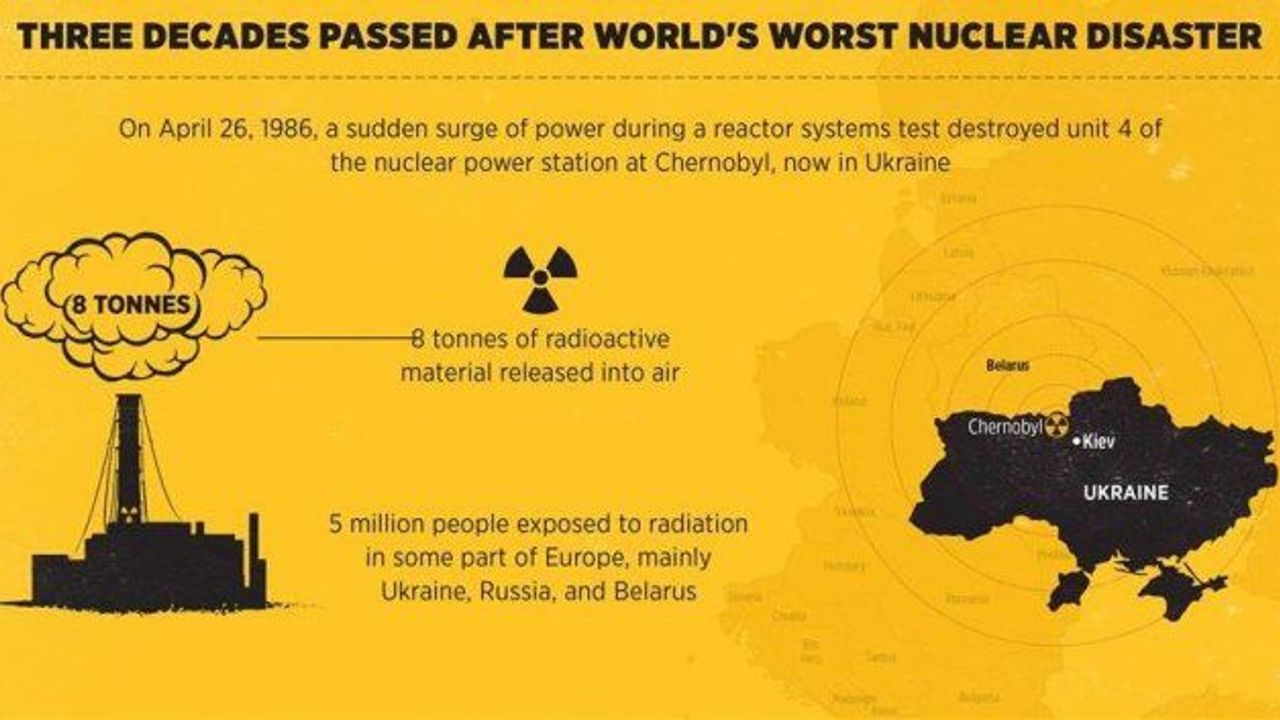30 years since Chernobyl accident, aftermath lingers
Decommissioning work is still ongoing at the Chernobyl nuclear plant nearly 30 years since its accident shocked the world, and is set to continue for 50 more, according to Ukraine's parliament.

On April 26, 1986, a sudden surge of power during a reactor systems test destroyed unit 4 of the nuclear power station at Chernobyl, now in independent Ukraine, then part of the Ukraine Soviet Socialist Republic, part of the U.S.S.R., 110 kilometers from Ukraine’s capital, Kiev.
The accident and the fire that followed released massive amounts of radioactive material into the environment, affecting not only the country of origin but surrounding countries as well.
Later research into the accident showed that the smoke clouds reached as far as the U.S. and China.
Fear of spreading radiation gripped many in Turkey’s Black Sea region, the area nearest Ukraine.
The remains of the nuclear plant, which still harbor the risk of radiation release even three decades later, will be disposed of by 2065 with the help of 3,000 workers.
After the accident, officials closed off the area 30 kilometers around the plant to the public, except for people with official business at the plant, those evaluating and dealing with the consequences of the accident, and those operating the undamaged reactors.
An Anadolu Agency correspondent visited the “ghost town” of Pripyat, only about 3 kilometers from the plant. Before the accident and its evacuation, it was home to some 49,000 people; now its current population is just 158, with an average age of 80 years old.
Chernobyl’s fourth reactor is being covered in concrete in order to reduce the risk of further radiation being released.
Cleanup work is financed with the help of 44 countries, including Turkey and EU countries.
According to Ukraine’s Ministry of Ecology and Natural Resources, the plant has been scrubbed of radioactive fuel, reducing risks 10,000 times.
People will be able to return to 60 percent of the region in 30-60 years, says the ministry.
Currently cleanup is in the second stage, due to end in 2022.
During the third stage in 2022-2045, experts will survey the radiation levels of the reactors and in the last step, through 2065, the nuclear plant will be fully decommissioned.
Industry experts still criticize how the Soviet Union dealt with the accident.
Soviet officials neglected to inform the public or surrounding nations, including Turkey, of what happened at Chernobyl.
Soviet officials initially pretended that the accident was a local issue and a non-critical one at that. It was two weeks after the accident that U.S.S.R. agreed to inform the public, but only partially.
According to World Health Organization, 600,000 people were affected by high levels of radiation in the region after the accident.
Meanwhile, 5 million people still live in radiation risk areas in Ukraine, Russia, and Belarus.
Anadolu Agency







